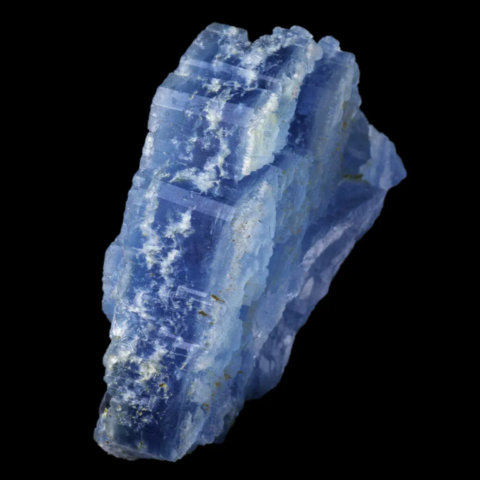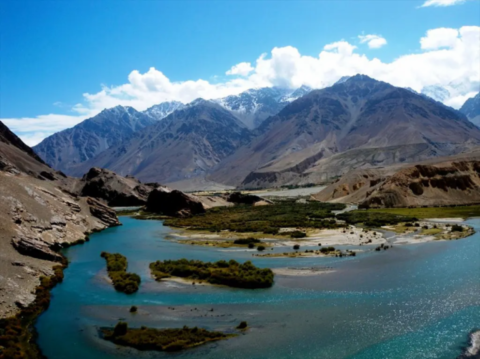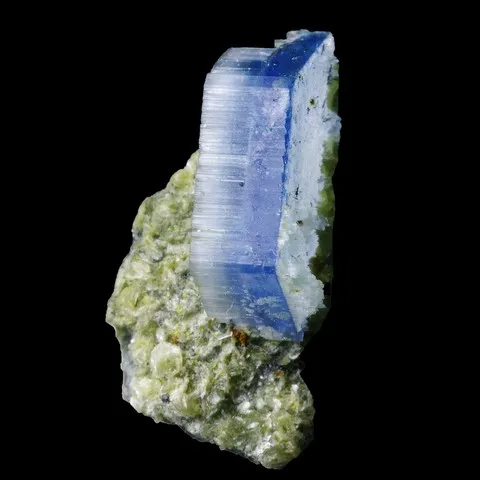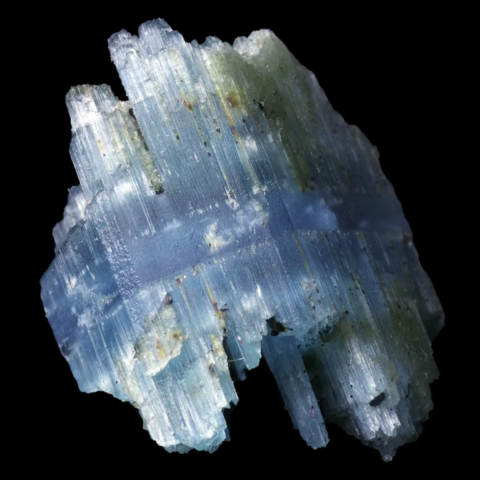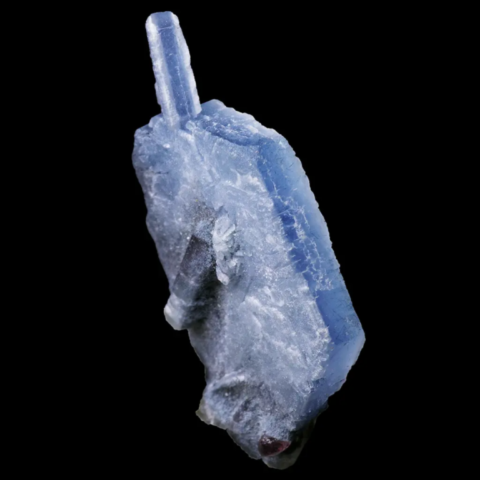Alkali-beryl from Deo Darrah, Afghanistan
Alkali-beryls from the Deo Darrah region, located in the Kuran Wa Munjan district of Afghanistan's Badakhshan province, represent a rare and fascinating variety of minerals. Historically identified as “vorobyevite” and then “rosterite”, they have been classified as beryls enriched in alkaline elements such as cesium, lithium, sodium and potassium. However, more recent research has rectified several key points concerning their chemical composition. This article explores their geological context, their geology, and the particularities that distinguish them from other beryls.
Photo : 3 cm alkaline beryl from Deo Darrah, Kuran Wa Munjan District, Badakhshan, Afghanistan © Rémi Bornet
Geological context of the Deo Darrah region
The Kuran Wa Munjan district at the north-eastern tip of Afghanistan is home to the Deo Darrah region, an exceptional mountainous area in the Hindu Kush range. This range, which stretches for hundreds of kilometers, separates Central Asia from the Indian subcontinent and is characterized by steep peaks and deep valleys, creating a landscape that is both majestic and austere. The Hindu Kush mountains in this region often exceed 6,000 meters in altitude, and river erosion has sculpted spectacular reliefs. The Kuran Wa Munjan district, and more specifically Deo Darrah, is distinguished by its geographical isolation, with steep passes and slopes that make access difficult, particularly in winter when snowfall blocks the roads. The population of this remote region is estimated at just 8,000.
However, this isolation has not prevented the region from becoming a site of major geological interest, thanks in particular to the exceptional deposits it harbors. The Deo Darrah pegmatites, magmatic intrusive rocks rich in rare minerals, formed in a complex tectonic context linked to the collision of the Indian and Eurasian plates. This collision favored alkaline magmatic intrusions, creating formations rich in incompatible elements, essential for the crystallization of rare and precious minerals, such as the atypical beryls that interest us here. These exceptional geological formations make Deo Darrah a must for mineralogical exploration and a hidden geological treasure in the Hindu Kush mountains.
Photo : Skazar Valley, Kuran Wa Munjan District, Badakhshan, Afghanistan © Takhar Media
Alkali-beryl formation and geology
Deo Darrah's alkali-beryls form in zoned pegmatites, intrusive magmatic rocks in which different zones correspond to different chemical and thermal conditions. These pegmatites are associated with classic minerals such as albite, micas, tourmalines and quartz. The beryls formed have tabular morphologies and vary in color from royal blue to blue-gray, this coloration being attributed to the incorporation of alkaline elements, such as sodium (Na) and potassium (K), into their crystalline structure. As alkaline elements, sodium (Na) and potassium (K) are not generally considered primary coloring elements in minerals, unlike transition metals such as iron (Fe), chromium (Cr) or copper (Cu), which directly influence crystal color. However, their presence can affect the color of a mineral indirectly, by distorting its crystal structure or influencing the conditions of formation. Beryls are cyclosilicates with a crystalline structure of stacked [Si6O18] rings, forming channels that can accommodate alkalis or water.
These crystals form during late hydrothermal processes that enrich the pegmatite with alkaline elements, favoring the incorporation of lithium, sodium and potassium, giving the beryls distinct physical and chemical properties.
Vorobyevite or rosterite ?
Initially, these beryls were named vorobyevite after the Russian mineralogist Vladimir Vorobyov, but more recent studies have clarified their composition. In 2012, exchanges between researcher Federico Pezzotta and Rob Lavinsky revealed the presence of sodium and potassium in the crystals, but absolutely no cesium, thus invalidating the vorobyevite hypothesis. Further analysis in 2015 by Anatoly Kasatkin confirmed the absence of cesium, and highlighted the presence of sodium and potassium in the peripheral zones of the crystals. However, this research was limited to the outer surfaces of these beryls, as no cross-sections or internal studies have currently been carried out to assess the deeper composition. For the time being, these analyses have enabled us to rename these crystals as atypical alkali-beryls, rather than associating them with an already existing variety.
Mineralogical and crystallographic features
Scientific and economic importance
Deo Darrah's alkali-beryls represent a unique opportunity for mineralogists to study the complex interactions between fluid geochemistry and mineral crystallization. They also offer economic potential, both for the gemstone market and for technological applications. The rare elements they contain could be exploited in fields such as electronics and renewable energies.
The alkaline beryls from Deo Darrah illustrate the richness and diversity of minerals formed in specific geological environments. Although they have been the subject of preliminary chemical studies, many questions remain, notably concerning their internal composition and the exact nature of the inclusions observed. Further investigation, including crystal cross-sections and advanced analytical techniques such as spectroscopy or X-ray diffraction, could resolve these uncertainties and deepen our understanding of these unique crystals.
Beyond their scientific interest, these beryls underline the importance of the Deo Darrah region as an unexplored source of rare minerals. They are not only prized specimens for collectors and museums, but also valuable witnesses to the complex geological processes that have shaped this part of the world. As new technologies and exploration methods are developed, Deo Darrah's alkaline beryls will continue to attract interest and contribute to advances in mineralogy.
References :
De Ascenção Guedes, R., Devouard, B. (2011) La bazzite du Bois Kersy, massif de La Lauzière, Bonneval, Tarentaise, Savoie. Le Règne Minéral: 101: 5-16.
Hudson Institute of Mineralogy. (2025). Mindat.org : The mineral database and mineralogy reference.

